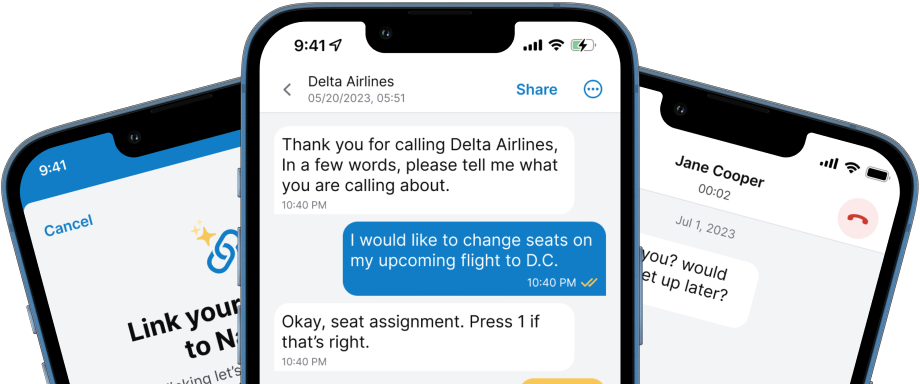Breaking Barriers: Deaf Representation in Media History
Representation is seeing your identity and culture presented in the media in a non-stereotypical way. Read more about deaf representation here!

Why Representation Matters
When you see someone who looks like you on screen, you feel seen. I think that's really powerful.
- Mindy Kaling, actress
What is representation?
Representation is simply seeing your identity and culture presented in the media in a non-stereotypical way. Not only is it validating, it has the benefit of educating mainstream society on other cultures and ways of thinking. It can be an effective way to break down stereotypes, educate on different ideas, and improve interpersonal conversations.
Representation can educate
One example may be showing how Deaf people point in everyday ASL conversations during a storyline. In hearing culture, pointing is considered rude, and not knowing that part of Deaf culture can cause a Deaf person to be seen in a negative light. Education through stories goes a long way. Awareness of different cultural norms can reduce potential conflicts.
Representation: You’re not alone

I was that Deaf kid. I’m from a small town in Minnesota; I was the only Deaf person I knew. So, when Marlee Matlin won the Oscar when she made it in Hollywood at that high of a level, it lit a fire in me. It meant that I could do it, too.
-Daniel Durant, Deaf Actor
Being a part of a minority group can feel isolating. Seeing others like yourself on your screen pulls you into a larger community. Many Deaf children, especially those who are mainstream and often the only Deaf students at their school, are shocked to learn that Deaf adults and other Deaf children exist. They often believe that they’re the only one. Seeing Deaf actors and actresses on screen is a huge boost to morale and self-esteem.
Representation can reduce discrimination
Often, discrimination comes from a lack of understanding or ignorance about the different needs of people. Stereotypes can be challenged if the identities are portrayed in a positive light, and with careful nuances. For example, a common stereotype is that Deaf people can’t drive. Seeing a Deaf person take the driver's seat in a film can quickly challenge that belief.
Early Representations of Deaf in Media
Silent Films

The earliest was the era of silent films during the early 1900’s. While the performers were not d/Deaf or hard of hearing, the films were all silent accompanied by on-screen text. There would be a lot of gestures, motions, and over-the-top emotive acting to show a story. Ironically, this era of film was the most accessible for the Deaf community, long before assistive technology for theaters.
We even had Deaf actors in silent films: Granville Redmond (a close friend of Charlie Chaplin), David Marvel, Eduardo Romero, and Albert Ballin. Only one film survived the years of aging: Granville Redmond’s role in one of Chaplin's films. Later, with the invention of “talkies” or added voice, the accessibility of silent films faded away.
However, Deaf people would soon return to the screen. In 1986, Marlee Matlin starred in her breakthrough film, Children of a Lesser God, which won 5 Academy Award nominations. Matlin also was the first Deaf Academy Award winner in history.
Sesame Street

A bit earlier, from 1971 to 2002, Sesame Street had a Deaf actress named Linda Bove, who played a librarian and shined a light on deafness in children's programming. Her regular appearances and signing on TV normalized deafness in many American households.
Later Representations of Deaf
From the 1990s onwards, we started seeing more Deaf actors and actresses in film. It was typical for hearing actors to play roles of deaf parts, but we began to see more genuine representation.
In 1995 Mr. Holland’s Opus came out with a music teacher who had a deaf son and showed the interpersonal struggles between them.
From 2000 to the current, we had multiple deaf appearances in the media. In 2000, the Sound and Fury documentary showed the complicated dynamics of having a cochlear implant and how that impacted the Deaf community.
Deaf actor Sean Berdy got his first role in Sandlot 2 in 2005. We would see him again in the hit series Switched at Birth, released in 2011, which showed two sisters switched at birth – one Deaf and one hearing.
Millicent Simmonds, another Deaf actress, starred in The Quiet Place in 2018 as a deaf daughter in a family and in its sequel, which was released in 2021.
The most recent Academy Award for Best Picture with Deaf Representation went to the film CODA (Child of a Deaf Adult). This story follows a CODA who comes of age in an all-deaf family.
The most recent release was the Marvel series called Echo. Not only is the actress Alaqua Cox deaf, but she’s also BIPOC and an amputee – representing multiple communities simultaneously.
Nagish had the honor of being present with many of these Deaf pioneers last fall at the NAD’s (National Association of the Deaf) Breakthrough Awards. The awards celebrated the advocacy work many have achieved in the entertainment industry with notables such as Troy Kotsur and Marlee Matlin.
Future of Deaf Representation
The community wants to see more complexity with Deaf characters played by Deaf actors and actresses. In the past, there has been a trend of non-disabled people playing disabled roles, which received backlash due to a lack of authenticity and representation.
Along with more complex storylines, there is a desire for more diversity, such as BIPOC Deaf actors, DeafBlind, and DeafPlus with multiple disabilities. By embracing these demands for more nuanced storytelling and diverse representation, mainstream media can contribute to a more inclusive and authentic portrayal of the Deaf experience, fostering greater understanding and empathy among audiences worldwide.





